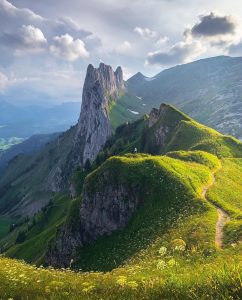Last Updated on November 25, 2023 by Sharon Advik
Sony Alpha a6600 Review:
I Like going on adventures with my friends; one of our favorite aspects of our adventurous lives is exploring new places while traveling.
Last year, we planned a trip to Australia to go scuba diving off the coast of Lady Elliot Island, hike through Tasmania’s Bay of Fires, and swim in Kimberley’s waterfalls.
We packed everything we needed because we were all so excited.
Every time I go on an adventure trip in the past two years, I have made it a point to pack my Sony A6600 camera.
This camera ensures I don’t miss a single opportunity to capture it beautifully on film and make it worthwhile, so I packed it for my exciting trip.
With this camera, I can take the most amazing photos, videos, and high-resolution graphics.
Additionally, it is simple to use and has excellent working capabilities.




Overview:
A friend of mine suggested I buy this camera.
He is aware of my constant willingness to purchase the latest camera model.
I was initially a little afraid because trying a brand-new camera for the first time is always risky.
However, acquiring this camera was the best thing I’ve ever done.
It offers me convenient handling and access to its features.
I’ll try to cover most of this camera’s capabilities and features in this review, even though I have much to say about them. I had different experiences in different situations.
But everything that happened ended up being fantastic.
Since Sony introduced the A6600 about a year ago, it has replaced the a6000 as the top model in the A6x00 lineup.
In addition to one of the best autofocus systems of any mirrorless camera, Sony has improved its sixth camera with an impressive battery (indeed, one of the best in the entire mirrorless market).
I discovered the image quality and overall performance to be more than adequate.
If they aren’t pushing the boundaries of photography under challenging situations, most photographers don’t need to purchase a full-frame camera setup just for the image quality.






Specifications:
ISO 100 – 32000(expands to 102400)
24MP – APS-C CMOS Sensor
5-axis Sensor-shift Image Stabilization
2359k dot Electronic viewfinder
3.00″ Tilting Screen
11.0fps continuous shooting
4K at 30fps Video Recording
FHD at 120fps Video Recording
503g. 120 x 67 x 59 mm
Built-in Wireless
Weather Sealed Body
Body and Size and Weight:
Regarding camera technology, Sony is a true innovator who has made a lot of advances in the last ten years.
Before using this one, I used its predecessor, the Sony a6500.
I discovered that the Sony a6600 shares the a6500’s sturdy design: dust- and moisture-resistant magnesium-alloy body covered in a pebbled black plastic skin.
I liked that although this camera is small, the grip is slightly bigger.
Using this camera with my larger lenses gives me a more secure grip.
Let me share one more exciting feature of this camera: It can use Sony DSLRs’ more powerful Z battery.
Sony confirms my super a6600 camera’s battery life to be more than twice as long as my old a6500.
It’s great fun that, when using the viewfinder, I can take, on average, 720 still pictures with this camera on a single battery charge, compared to the 310 images my old a6500 camera could take in the same circumstances.
Let me take a more thorough tour of this camera’s adaptable body.
Two dials, one for choosing the exposure mode and the other for adjusting settings based on my shooting mode, were visible on the camera’s top.
Since I like to shoot in manual mode, I prefer to see a second dial at the top of the grip.
Right now, I use the scroll wheel on the back of the camera in conjunction with the top dial to change settings, which feels clumsy in some ways, especially when using the viewfinder.
In addition, two programmable buttons on the top and various other buttons are grouped toward the camera’s right side.
Although the controls are somewhat small, they are not overly crowded.
Considering the price point, I thought a joystick for adjusting the focus point and navigating menus was a nice touch.
I adore that on this camera, a function menu provides quick access to frequently used settings.
This customizable menu lets me replace any settings I don’t use very frequently.
The Sony A6600 measures 120 x 67 x 69 mm (4.72 x 2.64 x 2.72′′) and weighs 503 g (1.11 lb / 17.74 oz).
Its weight is about average for its class compared to the 456g average for mirrorless cameras.
It is large and thicker than the average item in its class, measuring 69mm.
Weather Sealing:
Yes! Yes! Yes! I’m relieved Sony has finally included this feature in their cameras.
I’m always offended to discover that a camera lacks weather sealing.
Because I adore taking outdoor photos, a camera I buy must have a weather-sealing feature.
The body of the Sony A6600 has environmental sealings that make it a weather-resistant camera and prevent water and dust from getting inside.
I use one of these Sony A6600 weather-sealed lenses to attach my camera, giving me a fantastic all-weather kit.
Lenses:
Every experienced photographer enjoys experimenting with various camera lenses.
My obsession with it has grown. I enjoy experimenting with my camera’s lenses to see which works best.
So, I must look into all the compatible lenses whenever I buy a camera.
I also discovered that the Sony A6600 has a Sony E lens mount, accommodating 184 native lenses.
There are many excellent options from third-party lens manufacturers in addition to Sony’s ever-expanding selection of E and FE mount lenses.
Its incredibly close flange focal distance allows me numerous opportunities to adapt lenses from other mounts, for which I am very grateful.
AF-capable A-mount lenses can be used with E-mount cameras when using the Sony LA-EA4 adapter.
When used with E-mount cameras, adapters from Metabones and Fotodiox allow using all Canon EF lenses with Auto Focus.
These lenses will be stabilized when used with the A6600 because it also has a sensor-based 5-axis image stabilization system.
One of the features that I value the most in a camera is sensor-based image stabilization.
I’m relieved that 98 lenses are weatherproof for the Sony A6600 and that I was able to find a fix for my camera’s non-weatherproof body.
The best lenses I’ve ever used on my camera are all listed below; they were all excellent.
- Sony FE 90mm F2.8 Macro G OSS
- Sony FE 24-105mm F4 G OSS
- Sony FE 200-600 F5.6-6.3 G OSS
- Sony FE 24-70mm F2.8 GM
- Sony FE 16-35mm F2.8 GM
- Sony FE 50mm F1.8
- Samyang AF 135mm F1.8 FE
- Sony E 55-210mm F4.5-6.3 OSS
Handling:
Sony made sure that operating this camera was simple and user-friendly.
This camera has all those features installed to work together to make it simple to handle and use.
The newest camera from Sony with optical 5-axis image stabilization is the A6600.
The in-body system ensures that the camera can stabilize all lenses, including E-mount lenses, without Optical SteadyShot (OSS) and A-mount lenses.
The A6600 offers 5-stops of compensation.
This camera’s stabilization system compensates for camera shake by correcting yaw and pitch.
According to Sony, five different types of motion can cause a camera to shake.
Their image stabilization system also accounts for horizontal, vertical, and rotary motion (rolling) in still photos and video.
The A6400’s 2.36 million dot OLED electronic viewfinder, which has a 120-fps high frame rate setting to make it easier to track moving subjects with almost no lag, is also used by the A6600.
I adore that. This camera’s flip-up screen is excellent for taking selfies and vlogging, but if I attach something to the flash hot-shoe, like an external microphone, I won’t be able to use the screen in this position.
I am thrilled that Sony added touch sensitivity to the LCD screen.
Focus point selection is much simpler and more natural due to the continued lack of a dedicated AF joystick.
It even works while using the electronic viewfinder.
Sensor and Processor:
For me, a camera’s camera and processor are the centers of its entire narrative.
I give the sensor and processor of a camera a lot of thought.
I want the sensor in my camera to be in top condition because I’m a photo freak.
Fortunately, the sensor and processor combination in this camera is lethal.
I appreciate that this camera’s 24.2MP APS-C Exmor CMOS sensor offers me high sensitivity from ISO 100 to 32000 and smooth, acceptable image quality with little noise.
Additionally, it allows me to work in low light while expanding to ISO 102400.
The sensor is impressive because it has a novel design that uses thin copper wiring, improved circuit processing, and an improved front-end LSI to increase light-gathering capabilities.
It allows me to enhance readout speeds to help with video recording and reduce noise in my images.
This camera’s sensor and BIONZ X processor enable 16-bit recording with 14-bit raw file output for a more comprehensive tonal and color range.
It also offers a top continuous shooting rate of 11 fps with AF and AE.
I can still picture myself shooting inside a building.
It was one of my architectural photography projects, and despite the poor lighting, this camera’s versatile processor allowed me to capture the desired shapes with excellent results.
It lessened the noise in my image before compression, resulting in a smoother, more precise picture.
Autofocusing:
Image quality is useless if your pictures are blurry, of course!
Fortunately, the A6600 also offers competitive autofocus performance with its full-frame siblings.
However, I took some time to adjust to its AF system because I thought the interface for controlling focus points was a little confusing, and the best feature—Real-Time Tracking AF—took some time.
However, once I figured it out, I began to appreciate the best autofocus performance of any APS-C mirrorless camera.
This feature will make my A6600 worth the investment for tracking wildlife or action sports subjects.
The A6600’s excellent autofocus system does not let users down in this regard.
It can keep moving subjects sharp while focusing with speed and accuracy.
When I set my camera to “Animal,” the Eye AF usually recognized and focused on one of my dog’s eyes.
If anything, the performance is even better when you switch to “Human.”
It’s excellent for portrait photography, but it also means that if you flip the screen up 180 degrees and stand in front of the camera to vlog, you can be sure your eyes are in focus.



LCD and Viewfinder:
The top-left corner of the A6600 houses the camera’s viewfinder.
It has a 0.39-inch 2,359,296-dot OLED and a frame rate that I can adjust between 60 and 120 frames per second.
The electronic viewfinder is equally clear and bright, with data that is easy to read displayed in white on the black border of the live view.
I found that the viewfinder offered a clear picture that matched the captured images when I mostly used it in its standard quality setting.
The more adaptable LCD screen is the other significant design advancement.
To take selfies, I turn up the screen to 180 degrees.
I can also tilt the screen to 74 degrees (for viewing the screen while holding the camera above your head).
For vloggers, in particular, the LCD’s selfie position is helpful.
The a6600 also has a new port for headphones and a jack for an auxiliary microphone, both located underneath the door on the camera’s left side (with the USB and HDMI ports).
The LCD has the same 3-inch screen as the a6500, which has 922K dots. The a6600’s touchscreen features have been expanded to include a touch shutter, touch tracking, and touch focus.
The monitor proved responsive during my tests.
Although the screen is bright, sharp, and detailed, it suffers from the common LCD issue of being unreadable in direct sunlight.
Connectivity and Battery:
With the built-in wireless (wi-fi) connectivity of the Sony A6600 (802.11b/g/n + NFC), I can transfer your photos to compatible devices without a physical connection.
The NFC feature on the A6600 enables touch-based communication between the device and other NFC-enabled items, such as smartphones.
Sony A6600’s Bluetooth connectivity feature is handy for connecting other supporting devices.
Another feature we like is using our smartphone as a remote to operate our A6600.
I can adjust the camera’s settings, press the shutter, view the LCD screen, and transfer files using a remote control app. A6600’s HDMI and USB ports are compatible with connecting to other devices.
The Sony A6600 has USB charging capabilities, allowing you to charge your camera with a USB cable without taking out the battery.
According to CIPA standards, the Sony A6600’s NP-FZ1000 battery has an 810-shot battery life.
The Sony A6600 has a good battery life for its class because the average battery life of mirrorless-type cameras is 377 shots.
Video Quality:
I am so amazed that my 6600 oversamples 6K capture for better videos to produce 4K movies.
The 6600 has hybrid log-gamma (HLG) for capturing high dynamic range and S-log 2 and S-log 3 gamma curves for capturing the full range of data from the image sensor (HDR).
This a6600, like my old a6500, has Slow and Quick Motion, allowing me to take slow-motion photos (like a trapeze artist floating through the air) and create time-lapse videos (for instance, of a flower opening).
It also has the same in-camera 5-stop, 5-axis stabilization as the a6500, enabling me to produce videos with less blur.
In my test vlogging video, I used the a6600’s built-in microphone rather than an auxiliary microphone and placed the LCD in the selfie position.
I only used the overhead lights in my studio and a desk lamp.
Although oversaturated, the video is clear and sharp with good color.
Despite being a little noisy, the audio is of a reasonable volume and audible.
The LCD was facing me over the lens so I could check the volume indicators and other settings while making sure I didn’t have spinach in my teeth.
Overall, it performs admirably enough to make our list of the top vlogging cameras.




Image Quality:
I used Sony’s Imaging Edge software and a calibrated monitor to view the RAW files for my analyses.
I used RAW+JPEG for all of my still photos. I did not edit any images and tested all photographs the same way I took them.
I used studio lighting, a steady camera stand, default metering, program mode, 200 ISO, auto white balance, and wide autofocus for my test still image.
I also used studio lights.
The photos were generally consistently good to excellent.
The colors and pictures were accurate to life.
However, the indoor test still image lacked the crispness of my outdoor pictures and was oversaturated.
My photographs were clear, bright, and sharp when taken outside in good lighting.
Skin tones were attractive and natural.
In photos I took outside in bright light, I was impressed with the clarity of detail, even in shadows and highlights.
The a6600 consistently provided me with well-balanced exposures and dynamic range with excellent points in challenging lighting conditions, such as a mix of bright lights and dark shadows or backlighting.
When I took a horse photo at a friend’s farm, I saw each hair in the animal’s mane.
I could also make out the eyelashes.




Why should one get a Sony a6600?
- More specifics offer 10% higher linear resolution and 24 MP more megapixels.
- It Improved its image quality (12 points) rating on the DXO evaluation scale.
- More dynamic range: Captures a larger spectrum of light and dark details (0.8 EV of extra DR) (0.8 EV of extra DR).
- It has better low-light sensitivity, requiring less light to produce usable images (1.3 stops ISO advantage).
- It Improved live-view autofocus: On-sensor phase-detection technology for more reliable autofocus.
- It has a headphone port that enables audio monitoring while recording for better sound control.
- It features a viewfinder with higher magnification and a larger image (0.70x).
- Fewer buttons to press: To make handling more accessible, it has a touch-sensitive rear screen.
- It has a Higher mechanical shutter speed (1/4000s) to freeze action; a faster shutter.
- Effortless time-lapse photography: Low-frequency shooting with an integrated intervalometer.
- More adaptable: Accepts interchangeable lenses, allowing for the modification of lens properties.
- Longer lasting: You can use one battery charge for 810 more shots.
- Better sealing: This can be used to shoot in humid or dusty environments because it is weather-sealed.
- It has better lighting and a hot shoe, allowing an external flash unit to be used.
- More straightforward wireless transfer: Supports Bluetooth for cordless image sharing.




Price:
The Sony A6600 cost $1,399 when it first entered the US market.
Retail prices typically remain initially close to the launch price before discounts become accessible after a few months.
Further discounts and stock clearance sales frequently drive the camera price significantly lower later in the product cycle, especially when the replacement model is about to debut.
After the new model’s release, handsome discounts are frequently discovered on the used car market.
Current cost:
The Sony A6600 is available for as little as $1,398 for the body only, and it costs $1,798 in a kit with an 18-135mm lens.
You can purchase a used A6600 for less money. Used A6600 models start at $1,118.
Conclusion:
This camera, in my opinion, is worth owning.
The Sony A6600 is excellent in some ways.
Its perfect autofocus system, for instance, has many features for enthusiastic videographers, though you must be careful of the rolling shutter effect.
Additionally, it creates sharp, detailed images of the highest caliber.
Almost any type of photographer could find the Sony A6600 a fantastic all-purpose camera that meets their needs.
It is considerably lighter and smaller than its full-frame A7-series and A9-series siblings.
It is also significantly less expensive than any full-frame Sony camera of the current generation.
The A6600 has a lot to offer whether you’re a full-time pro looking for a “side camera” and a professionally-capable backup or perhaps if you’re a serious hobbyist or beginner looking to make a long-term investment in a fantastic primary camera.
Related posts:
I am a Professional and Certified Digital Photographer born in the USA. I have been in this field of photography for 22 years, and in these years, I have used many photography lenses and Cameras, which I want to share here on this website about my experience. The idea for Bestoflens.com is to provide honest information about different Lenses and Camera products in the format of a “Best lenses for AYZ” list. I want this website to be the last destination for people to pick the best Cameras and lenses to fit their needs. You can find our unbiased reviews here on Bestoflens.








